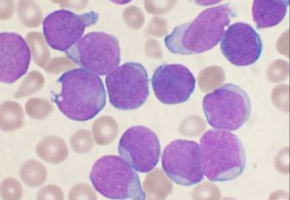
Researchers have discovered that an enzyme called uracil-DNA glycosylase (UNG) protects the ends of B cell chromosomes to facilitate the proliferation of these antibody-producing cells in response to infection.
The study “UNG protects B cells from AID-induced telomere loss,” published online ahead of issue in The Journal of Experimental Medicine, also suggests that targeting this enzyme may help treat certain types of non-Hodgkin’s lymphoma.
When a B cell first encounters a foreign antigen, it starts to proliferate and produce a DNA-modifying enzyme called activation-induced deaminase (AID).
This enzyme creates mutations in the cell’s immunoglobulin genes so that the cell’s progeny produce a diverse array of antibodies that can bind the antigen with high affinity and mediate various immune responses.
But AID can create mutations elsewhere in the B cell’s genome, and, if these mutations are not mended by UNG or other DNA repair proteins, this can lead to cancers such as non-Hodgkin’s lymphoma.
The new study by a team of researchers led by Ramiro Verdun of Sylvester Comprehensive Cancer Center at the University of Miami Miller School of Medicine and Javier Di Noia of Institut de Recherches Cliniques de Montréal investigates whether AID targets the telomeres of mouse B cells.
They chose this direction because telomeres—structures that protect the ends of chromosomes to facilitate cell proliferation—contain similar DNA sequences to immunoglobulin genes.
The researchers found that in the absence of UNG, AID created mutations in B cell telomeres that caused them to rapidly shorten, limiting the proliferation of activated B cells.
UNG helped to repair these mutations, preventing telomere loss and facilitating B cell expansion.
UNG’s ability to protect telomeres therefore helps B cells to continue proliferating while they mutate their immunoglobulin genes, allowing them to mount an effective immune response.
But the enzyme’s activity may also help non-Hodgkin’s lymphoma cells, which often overexpress AID, to continue proliferating.
The researchers found that inhibiting UNG blocked the growth of human diffuse large B cell lymphoma cells expressing AID.
“So UNG can contribute to lymphomagenesis by protecting UNG for proliferation, suggesting that targeting UNG may be a means to delay the growth of AID-positive cancers.”
Source: The Journal of Experimental Medicine
The World Cancer Declaration recognises that to make major reductions in premature deaths, innovative education and training opportunities for healthcare workers in all disciplines of cancer control need to improve significantly.
ecancer plays a critical part in improving access to education for medical professionals.
Every day we help doctors, nurses, patients and their advocates to further their knowledge and improve the quality of care. Please make a donation to support our ongoing work.
Thank you for your support.